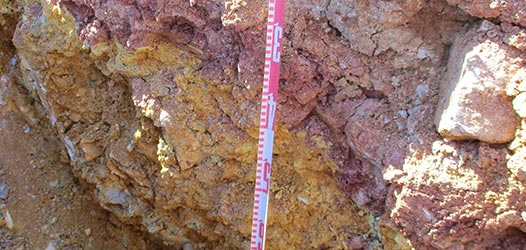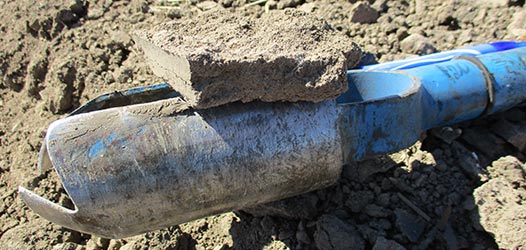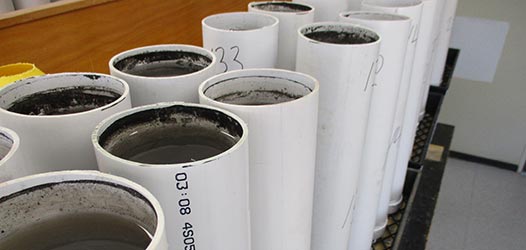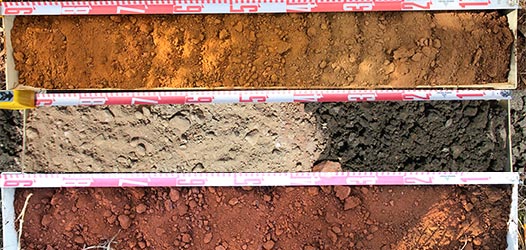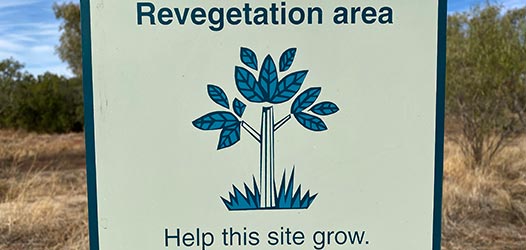“It’s been a real pleasure working with Terry and the team from Highlands Environmental. They provided thorough analysis and practical recommendations for our grasslands rehabilitation project.”
Understanding material characteristics, and inherent limitations to plant growth and establishment and landform stability, is critical to achieving successful rehabilitation.
Material Geochemical Characterisation
We apply traditional and customised analytical techniques combined with specialised interpretive services to determine the geochemical nature and behaviour of waste rock, overburden, and mineral wastes e.g., tailings. This includes static and kinetic acid-base accounting for acid and metalliferous drainage (AMD) and saline drainage characterisation. We also develop post-mining landform design parameters based on material properties e.g., salinity and sodicity, and erosion hazard control effectiveness. Contact us today and see what our team of subject matter experts can do for you.
Soil Testing
We test thousands of ‘soil’ samples each year. We have streamlined procedures for sample collection, testing, interpretation, and reporting, often in our plain talking ‘rehabilitation agronomy notes’ format. We have developed science-based indicators and thresholds that define material suitability for use in rehabilitation, including topsoil and underlying materials in the root zone. We recommend testing of all materials prior to creating Anthroposols in rehabilitation e.g., new A horizons (0-20 cm) which are usually respread topsoil and new B horizons (20-90 cm) of waste rock or overburden. Contact us today to discuss how soil testing can improve your rehabilitation outcomes.
Our Soils Laboratory
We operate a soil science laboratory in Emerald. Our current laboratory work is focussed on solute leaching through coal mine spoils, the profound effects of gypsum on leachate quantity and quality, and determining optimum rates of gypsum application for individual spoils. This inexpensive experimentation will ensure effective amelioration of problematic spoils and save our clients’ money by optimising gypsum application rates. We recommend you contact us today and book some bench space in our laboratory.
Ameliorant and Fertiliser Recommendations
What do all the numbers mean? Making ameliorant and fertiliser recommendations is not for the fainthearted. It requires significant specialist knowledge and experience in soil science and plant nutrition, rehabilitation practice, fertiliser product options and post-mining land use requirements. We make hundreds of fertiliser and gypsum recommendations each year. Contact us and we can do this for you.
Practice Advice
We have been involved in practical large-scale mine site rehabilitation programs since 1993 - so we have walked a few miles in your shoes. When it comes to rehabilitation practice, we know what, when, how, and why it works or does not. Talk to us about the importance of deep ripping, seedbed preparation and the application of ‘good agricultural practice’ to achieve better mine rehabilitation outcomes. We have even written a manual on how to rehabilitate a coal mine! Contact us for practical advice to achieve better mined land rehabilitation outcomes.
Client Testimonial
Mr Chris Wilson
Healthy Landscape Manager
Carnarvon Station Reserve, Bush Heritage Australia
“Terry is the best mining environmental professional I have ever worked with.”
Mr Cec Ivers
Mine Manager
(formerly Mine Manager, Kestrel)

